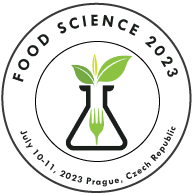
Sheila Ruiz Barbero
Nestlé Research Lausanne, Switzerland
Title: Impact of molecular structure in glassy food matrices
Biography
Biography: Sheila Ruiz Barbero
Abstract
Statement of the Problem: Food powders are often made of glassy materials with various compositions and molecular structures which may strongly impact their functional properties. However, the impact of molecular structure on molecular packing and its relationship with powder stability is very complex and is still not well understood. Therefore, this study aims to understand the molecular interactions between two or three ingredients from few experiments and extrapolate the knowledge to a wider range or compositions with the final aim of linking molecular packing and powder stability.
Methodology: A plasticizer is defined as a low molecular weight diluent that increases the molecular mobility by increasing the free volume in a polymer when it is present in a concentration higher than a threshold. A property of these plasticizers that is not usually considered is that, at low amounts, they can have an anti-plasticization effect. This means that they can act as a packing enhancer by filling the hole free volume which limits the molecular mobility despite decreasing the Tg. The identification of the threshold is key to understand the effect of adding small molecules on a selected polymer, which will predetermine the molecular mobility and, therefore, the stability. Other molecular structure properties such as branching have as well a strong impact on molecular mobility and are also investigated in this study.
Conclusion and Significance: The study of the molecular structure such as the presence of small molecules on a selected polymer or branching properties on molecular packing is key to predetermine the molecular mobility and, therefore, the powder stability. The generated knowledge can be applied to many fields in which the stability of powders is crucial, such in the potential use of more sustainable packaging.

